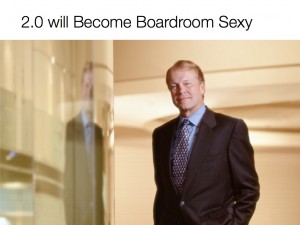What is the most important leadership competency for the successful enterprise of the future? According to a new study by IBM’s Institute for Business Value, CEO’s point to creativity as the engine for future growth.
Creative leaders are key to driving the kind of change large organizations require to wrestle with global complexity and information overload. Open leadership coupled with inspiring creativity is the management mantra of this new decade. It’s a far cry from the pop management themes of yesteryear which advocated tightly controlled hierarchies, silos, and re-engineered and structured processes that slashed costs, jobs, and produced routine outcomes.
One of the reasons I love working with the Council members is because their energy and passion is nearly limitless. They all work in the sweet spot of this new corporate cultural revolution. Selling transparency, collaboration, trust, and authenticity– they’re armed with the principles that will guide their organizations to meet the challenges of the 21st century.
As these corporate positions are relatively new, there is a lot of flexibility and opportunity for our members to express creativity to advance the state of adoption company-wide. Along these lines, I want to highlight one of our members’ (Ted Hopton) efforts to inspire adoption of its socio-collaborative platform. Called, “the Wiki” (although admittedly, much more than a wiki), UBM employees brainstormed fun and engaging ways to introduce its employees to Jive SBS 4.0’s new features. As it turns out, employee Chris Harris (aka DJ $crilla) is an award-winning rapper. He wrote the lyrics, performed, and directed the video. The video was also filmed and edited by UBM employees.
And what did the CEO, David Levin, think of the creative execution? He was the chief sponsor and appears in a cameo role. Big ups, all around.

